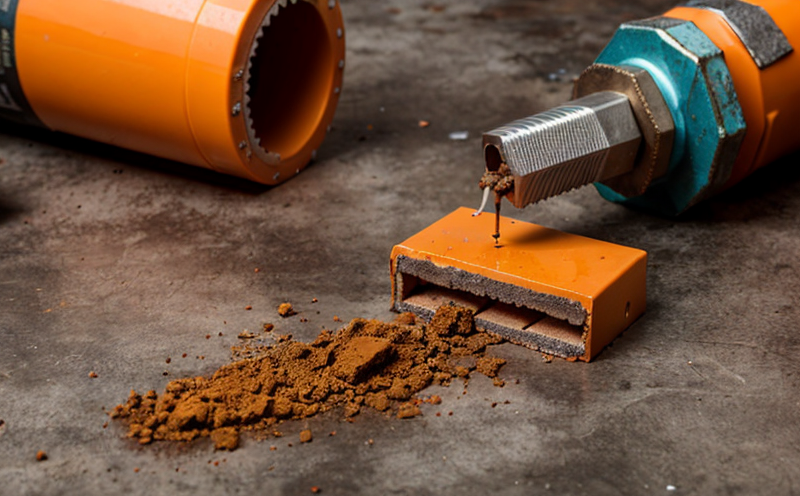Corrosion Testing: A Comprehensive Guide
Corrosion testing is a crucial aspect of ensuring the integrity and longevity of materials used in various industries such as construction, aerospace, automotive, and chemical processing. Corrosion can lead to significant economic losses due to damage or failure of equipment, structures, and machinery. Therefore, it is essential to understand the mechanisms of corrosion and employ effective testing methods to evaluate the resistance of materials against corrosion.
What is Corrosion?
Corrosion is a natural process that involves the degradation of materials, usually metals, in the presence of air, moisture, or other environmental factors. It can lead to weakening, cracking, or complete failure of materials, resulting in economic losses and potential safety hazards. Corrosion occurs through various mechanisms, including:
Oxidation: A chemical reaction between a metal and oxygen that leads to the formation of oxides.
Hydrolysis: A reaction between a metal and water that results in the formation of hydrated salts or acids.
Galvanic corrosion: An electrochemical reaction that occurs when two dissimilar metals are in contact with each other and an electrolyte.
Corrosion Testing Methods
There are various methods used to evaluate the resistance of materials against corrosion. Some common testing methods include:
Immersion testing: A simple method where a specimen is submerged in a corrosive solution, such as saltwater or acid.
Accelerated testing: A faster and more aggressive method that uses high temperatures, pressures, or concentrations to accelerate the corrosion process.
Environmental exposure testing: A method that simulates real-world conditions by exposing specimens to different environmental factors such as temperature, humidity, and pollutants.
Detailed Corrosion Testing Methods
Salt Spray Testing
Salt spray testing is a widely used accelerated testing method that evaluates the resistance of materials against corrosion in a controlled environment. The test involves spraying a salt solution onto a specimen at high pressure, usually around 30-60 psi, to simulate exposure to marine or industrial environments.
The benefits of salt spray testing include:
Cost-effective: Salt spray testing is relatively inexpensive compared to other accelerated testing methods.
Standardized conditions: The test can be performed under standardized conditions, ensuring reproducibility and comparability with industry standards.
Rapid results: Results from salt spray testing are typically available within 24-48 hours.
However, there are also limitations associated with salt spray testing:
Limited accuracy: Salt spray testing may not accurately predict real-world corrosion behavior due to variations in environmental conditions.
Overestimation of resistance: Some materials may exhibit overestimated corrosion resistance during salt spray testing, leading to complacency and potential risks in actual applications.
Pendulum Impact Testing
Pendulum impact testing is a method used to evaluate the resistance of coatings or protective films against erosion and wear. The test involves dropping a pendulum with a specified weight onto a coated specimen, measuring the depth of penetration or erosion after impact.
The benefits of pendulum impact testing include:
Realistic conditions: Pendulum impact testing simulates real-world impacts that may occur during transportation, handling, or service.
Cost-effective: The test is relatively inexpensive compared to other methods used for evaluating wear and tear resistance.
Comprehensive evaluation: Pendulum impact testing evaluates not only the coating but also the underlying material.
However, there are limitations associated with pendulum impact testing:
Limited correlation: Results from pendulum impact testing may not correlate directly with actual service conditions or field performance.
Equipment variability: The accuracy of results depends on the quality and calibration of the equipment used for testing.
QA Section
Q: What are some common types of corrosion that occur in real-world environments?
A: Common types of corrosion include oxidation, hydrolysis, and galvanic corrosion. Additionally, other forms of corrosion such as stress corrosion cracking (SCC), pitting, and crevice corrosion can also occur.
Q: How is the severity of corrosion evaluated?
A: The severity of corrosion is typically evaluated using metrics such as mass loss, thickness loss, or the extent of surface damage. In some cases, numerical ratings may be assigned to quantify the level of corrosion.
Q: Can any material be tested for corrosion resistance?
A: While most materials can be tested for corrosion resistance, certain materials like ceramics and glass are resistant to corrosion by definition and therefore do not require testing. However, even these materials may exhibit microcracking or other forms of degradation under specific conditions.
Q: What is the difference between accelerated testing and environmental exposure testing?
A: Accelerated testing involves subjecting a specimen to more aggressive conditions than those found in real-world environments, whereas environmental exposure testing simulates actual service conditions. Accelerated testing can provide faster results but may not accurately predict long-term performance.
Q: Can corrosion testing be performed using computer simulations or modeling?
A: Yes, computer simulations and modeling can be used to predict corrosion behavior under various conditions. However, these methods are typically more accurate when combined with experimental validation and actual test data.
Q: What is the significance of electrochemical tests in evaluating corrosion resistance?
A: Electrochemical tests measure the electrical properties of a material during exposure to corrosive environments. These tests provide valuable information on the kinetics of corrosion reactions, enabling the identification of potential problems before they occur.
Q: How can I ensure accurate and reliable results from corrosion testing?
A: To ensure accurate and reliable results, it is essential to:
Follow standardized test protocols
Use calibrated equipment
Validate test results against actual performance data
Consider multiple testing methods for comprehensive evaluation
In conclusion, corrosion testing is a vital aspect of ensuring the integrity and longevity of materials in various industries. Understanding the mechanisms of corrosion and employing effective testing methods can help predict potential problems before they occur, thereby preventing significant economic losses due to damage or failure of equipment, structures, and machinery.

































